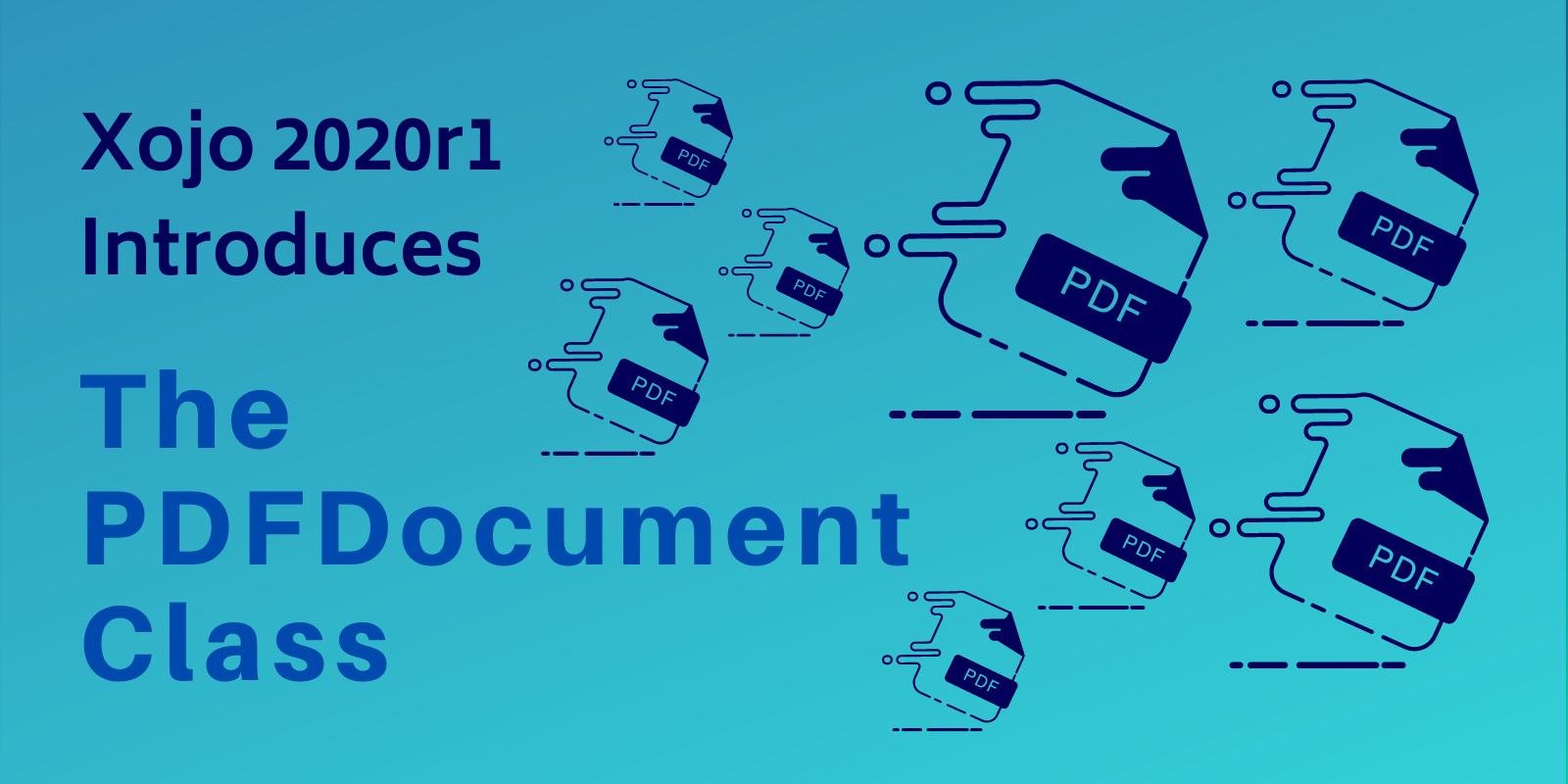Add the new native DateTimePicker control to your Window Layouts to get the same look, feel and behavior you’d expect from the OS itself.
Comments closedAuthor: Javier Menendez
With Xojo 2020r2 you can now add to your Window Layouts a native Search control for your desktop apps, getting the same look and feel and behavior you’d expect from the OS itself.
Comments closedSometimes we need to deal with temporary FolderItem instances, and in those cases it would be great to not have to care about when they get out of scope in order to delete them. Wouldn’t it be great to automate that task? Continue reading and you’ll see how easy it is to implement this!
Comments closedAmong the many new features introduced by the Web Framework 2.0, one of my favourites is the new WebChart class. Based on Chart.js, this class offers a total of eight chart types you can create and use really easily in your projects; including the Line, Bar, Pie or Doughnut chart types among others.
Comments closedBased on recent conversations with a couple Xojo users, here are a few quick tips for uploading and working with SQLite and MySQL databases on Xojo Cloud.
If you aren’t already familiar with Xojo Cloud, it’s simple, secure, maintenance-free hosting for your Xojo web apps.
Comments closedOne of the trickier things when dealing with PDF document creation is typography. By default, the PDF typography handling in Xojo’s PDFDocument class includes the “standard 14“, 14 typefaces you can use freely without requiring them to be included as part of the document itself. This guarantees a very important thing: any user can open and view that PDF document as it was created, without the text suffering from typography substitution, style lost, variations in kerning and tracking, etc. The standard 14 include Times, Courier, Helvetica, Symbol and Zapf Dingbats.
Comments closedXojo 2020r1 brings a highly requested feature to the Xojo IDE: the ability to create PDF documents from code! Now you can use the already familiar methods in Xojo’s Graphics class to create Standard PDF 1.4 documents with the PDFDocument class.
Comments closedARC4 is a symmetric encryption algorithm fast and easy to implement. Being symmetric does means that it uses the same function with the same key (varying from 40 to 2048 bits) both for cyphering and de-cyphering a block of data.
Is it the most secure or robust encryption algorithm around? Not really. But it provides a good amount of performance and you can take further steps in order to correct some of its flaws. So, continue reading if you are interested in having this one in your developer toolset implemented as a Class with separate methods to encrypt and decrypt a block of information (even if it uses the same function in both cases).
Comments closedSure you can create a Subclass of any Picture, Canvas or class and write code to center another Picture in its respective Graphics contexts. But taking the class extension approach means that you can reuse the same code for any of these (or any additional class) offering a Graphic context, so you can pass along the Picture you want to center and re-scale (if needed) in its area.
Comments closed
